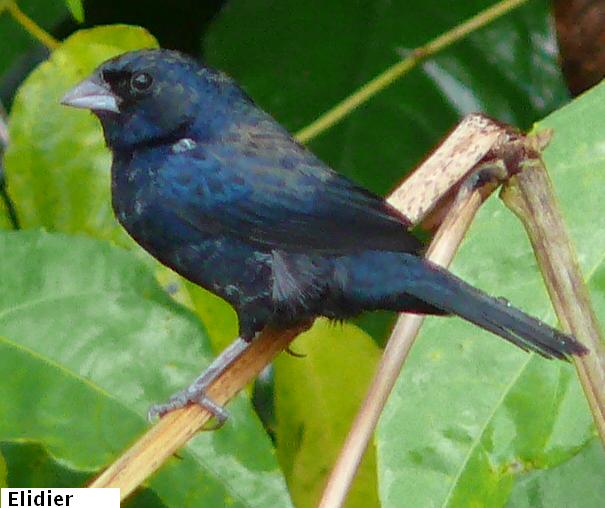
Volatinia jacarina
TAXONOMY
Tanagra jacarina Linnaeus, 1766, northeastern Brazil. Two subspecies.
OTHER COMMON NAMES
French: Jacarini noir; German: Jacariniammer; Spanish: Semillerito
Negriazulado.
PHYSICAL CHARACTERISTICS
4–4.3 in (10–4,3 cm); 0.34 oz (9.7 g). Sexes differ in color.
Males are uniformly blue-black. Females are brown, paler below,
with dark-streaked chest. Juveniles resemble females.
Males obtain breeding plumage at about one year of age.
DISTRIBUTION
V. j. jacarina resident from central and eastern Brazil south to
central Argentina and northern Chile; V. j. splendens resident
from central Mexico south to Venezuela and Colombia; also on
Grenada in the Lesser Antilles.
HABITAT
Low, seasonally wet grassland, arid lowland scrub, and weedy
fields.
BEHAVIOR
Males sing conspicuously from fences and display by jumping
upward with a flick of their wings. In winter, they are found in
flocks, some containing a few hundred birds; they sometimes
flock with other small seed-eating birds.
FEEDING ECOLOGY AND DIET
The diet is almost exclusively grass seeds, although they eat
some insects and berries. They feed by picking seeds from
grass seed heads and will pick grit and seeds from roads.
REPRODUCTIVE BIOLOGY
Monogamous. The nest is placed low to the ground to 10 ft (3
m) high. Commonly three, less often two, eggs are laid from
May through October. Data on incubation and fledging not
available.
CONSERVATION STATUS
Not threatened; locally abundant.
SIGNIFICANCE TO HUMANS
None known.
Other popular Animals
Photo Gallery of - Blue-black grassquit
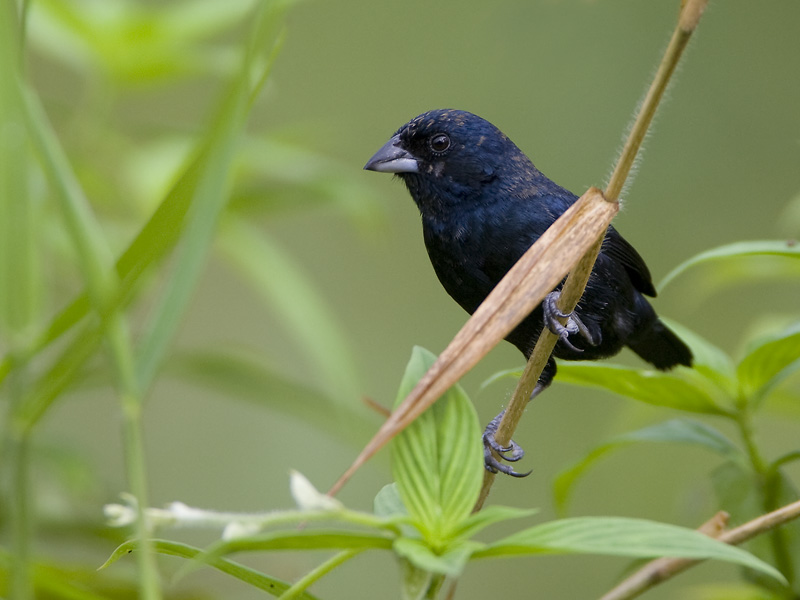
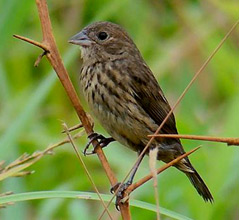
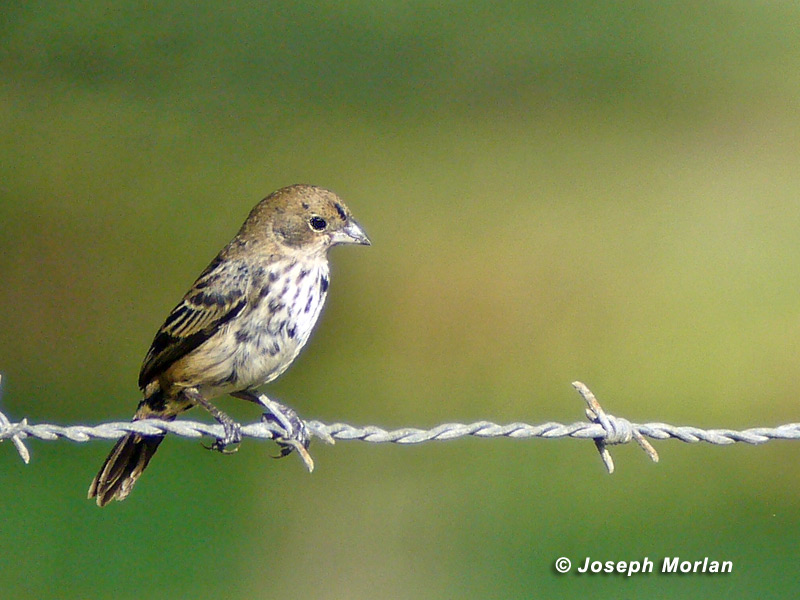
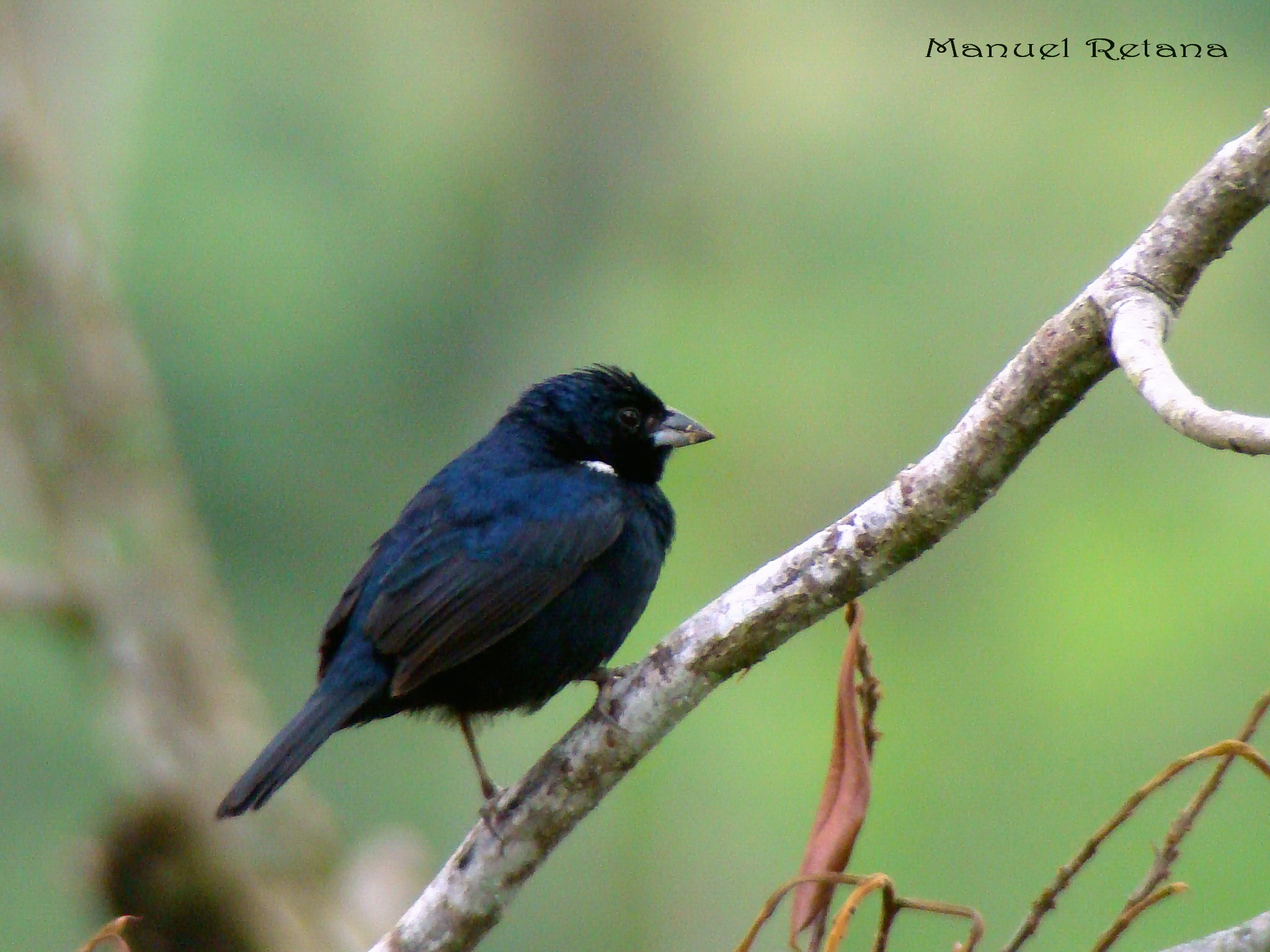
 Animalia Life
Animalia Life